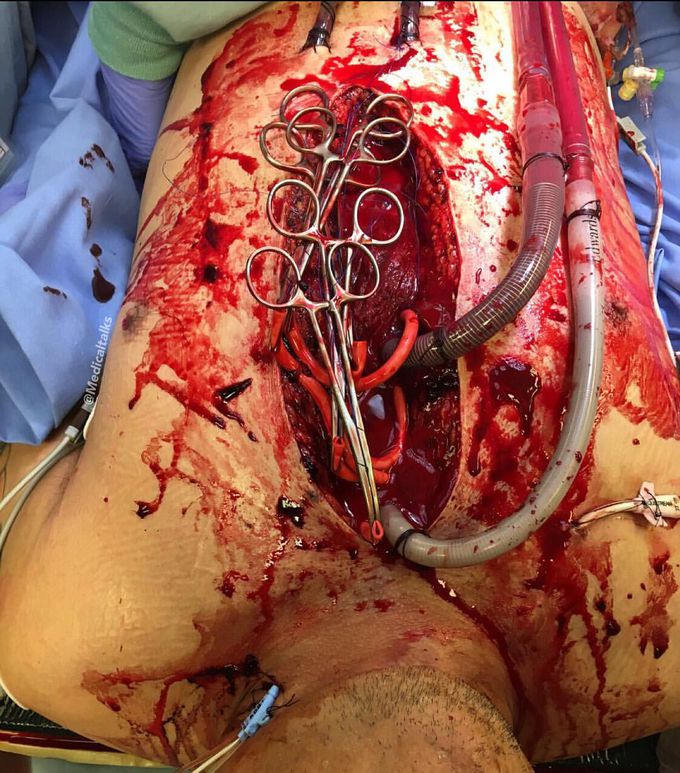


Medical case
Today’s case is not a trauma, but definitley a cool one! First orientation - we are looking at the patient’s chest, and his head is at the bottom of the picture! This patient here had just gone through a nephrectomy, or kidney removal, the day prior. He was actually a kidney donor recipient and the accepted kidney stopped functioning; therefore they had to go back in and take the kidney out! Post-op day one, this patient went into sudden cardiogenic shock. The difference between cardiogenic shock and cardiac arrest is when in shock, the heart is still working, just the ventricles are not working up to their potential; therefore the heart is unable to properly circulate blood to the organs. In arrest, the heart completely stops, and does not pump any blood at all to your organs. This patient was quickly taken to the cath lab for a STAT angiogram. The results showed that he had a diffuse coronary artery disease (aka plaque in vessels supplying the heart), that was unable to be repaired with a simple percutaneous coronary intervention (PCI, aka angioplasty). What this means is they could not break the plaque down and open up the coronary arteries by feeding a balloon catheter through another major artery (i.e. femoral or radial). Therefore, he was rushed into open heart surgery where they performed an emergency coronary artery bypass graft (CABG). During the procedure, he was put on a cardiopulmonary bypass, was unable to be weaned, and was transitioned to VA ECMO, or venous-arterial extracorporeal membrane oxygen, which is the two giant tubes on the right side of the picture. Basically, this machine turns the heart off, by connecting to the inferior vena cava, pumping the blood through a machine to oxygenate it, and re-pumping it through the aorta, completely bypassing the heart and lungs. Unfortunately, once the CABG was done, he was unable to be successfully taken off ECMO, therefore his chest was left open in this state. If the patient’s heart is unable to regain full function, his prognosis is grave without one of the most important organs in the body! Surprisingly he survived. 6 months after this procedure, he was able to return to work. Credit - @trauma_time
Hemodynamic stimuli&nonhemodynamic stimuliEffects of sugar on teeth


